Striking images of North American black and red snakes often captivate the imagination, arousing curiosity about their identity, behavior, and habitat.
Among the diverse species of snakes that adorn this continent, these snakes stand out with their brilliant colors, a testament to nature’s artistic palette. From the elusive Rainbow Snake to the docile Milksnake, these creatures weave through forests, wetlands, and grasslands, each with its own distinct characteristics and behavior.
Join us to learn about these 22 species of black and red snakes in North America through the article below.
Different Black and Red Snake Species
Western Worm Snake
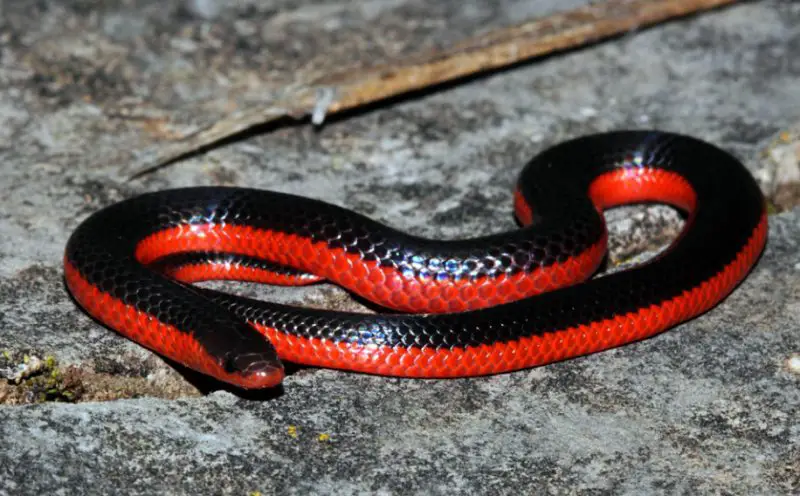
The Western Worm Snake (Carphophis vermis) is a small, bicolored species with a black dorsal side and a red underbelly, growing up to 11 inches long. Fossorial by nature, these snakes spend most of their lives underground, emerging primarily to feed on earthworms.
Female Western Worm Snakes lay up to 8 eggs in late spring, which hatch into miniature adults by early fall. Their secretive behavior makes them seldom seen above ground.
Gray-banded Kingsnake
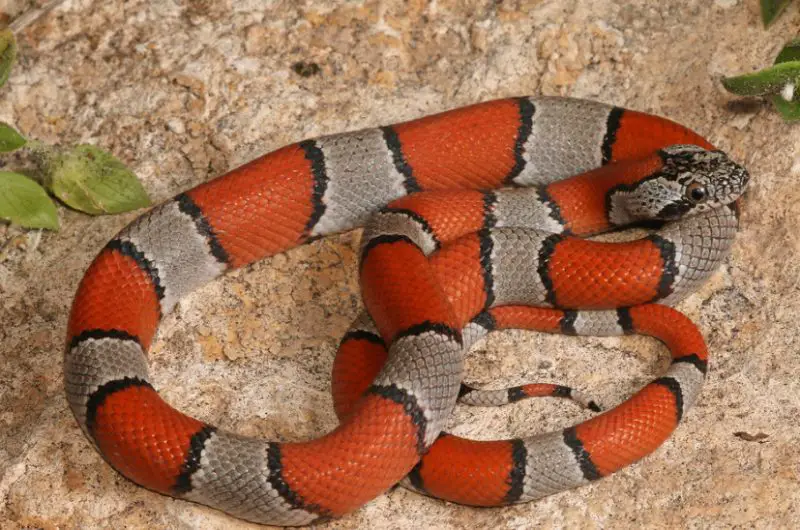
The Gray-banded Kingsnake (Lampropeltis alterna), also known as the Davis Mountain King Snake, exhibits two morphs with red-orange or orange-red bands against a gray or black background. Although abundant in rocky, limestone terrains, especially on mountain slopes, they are rarely seen by people.
Nocturnal by nature, they hunt for lizards, frogs, and eggs at night. In summer, females lay up to 13 eggs that hatch within 2–3 months. While elusive in the wild, these Southwestern US natives are popular in the pet trade.
Sonoran Coralsnake
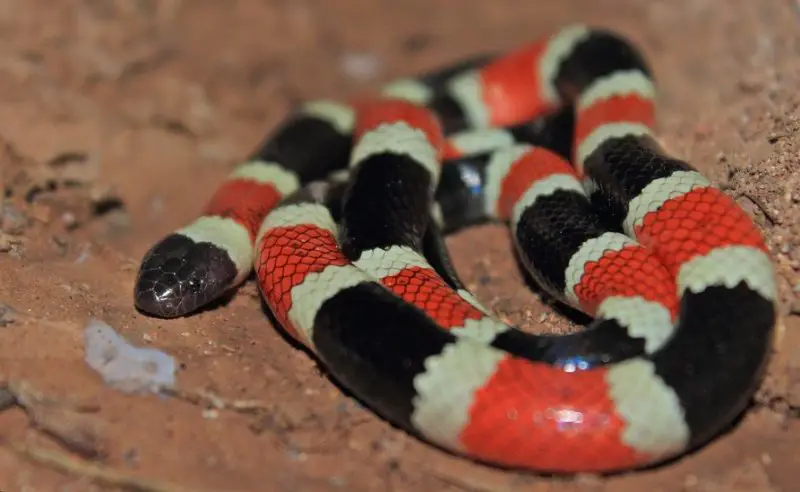
The Sonoran Coralsnake (Micruroides euryxanthus), also known as the Western Coral Snake or Arizona Coral Snake, is found in Central Arizona and parts of New Mexico. It features red and black rings with off-white to white bands and can grow up to 21 inches long.
Highly venomous, its bite can cause pain, necrosis, fever, vomiting, and blurred vision, requiring medical attention. Preferring to avoid human interaction, it releases a foul smell to deter predators. In its arid habitat, it primarily feeds on lizards.
Black Swampsnake
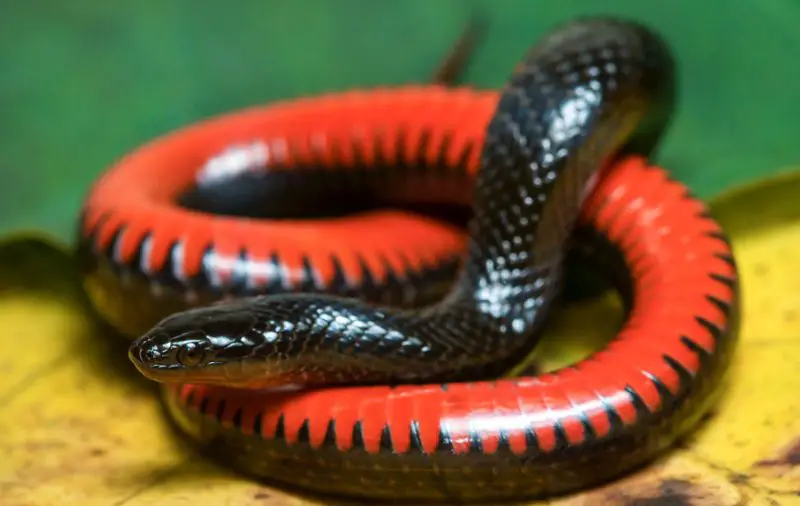
The Black Swampsnake (Liodytes pygaea), also known as the mud snake or swamp snake, thrives in semiaquatic environments like swamps, particularly in Florida. These nocturnal snakes, growing up to 15 inches, are rarely seen. Their diet includes small fish, frogs, and earthworms, which they swallow whole.
Non-venomous and non-aggressive, Black Swampsnakes try to flee from humans and release a foul smell when threatened. Their black and red coloration is distinctive in their swampy habitats.
Thornscrub Hook-nosed Snake
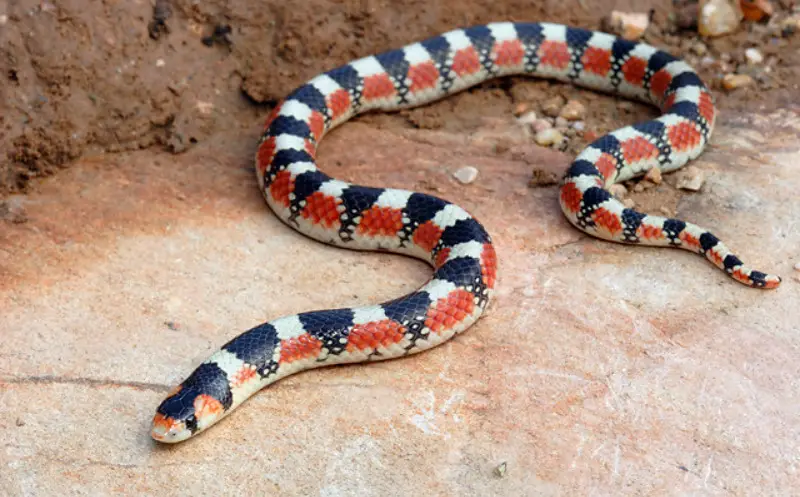
The Thornscrub Hook-nosed Snake (Gyalopion quadrangulare) is recognized by its red underbelly with black and gray banding and its upturned snout. Found in New Mexico and Arizona, it inhabits grasslands and short grass prairies. These nocturnal snakes are rarely encountered as they hide in vegetation during the day.
Their diet consists mainly of spiders and centipedes. Oviparous in nature, females lay clusters of eggs that hatch within 9 to 12 weeks, perpetuating their species in their arid habitat.
Banded Watersnake
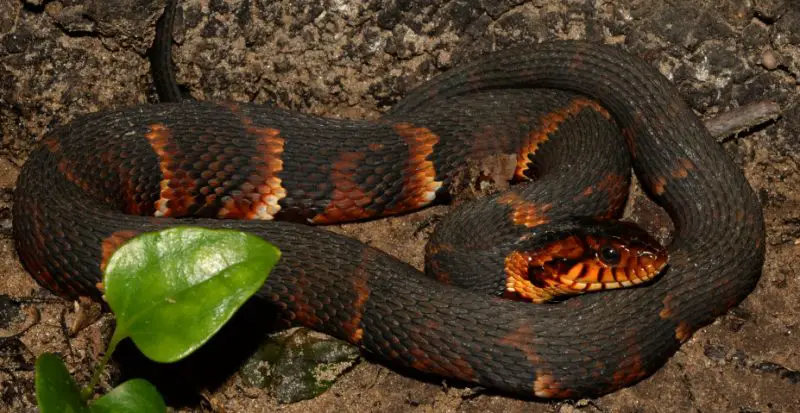
The Banded Watersnake (Nerodia fasciata), also known as the southern water snake, exhibits various color morphs, including brown, gray, or black with red bands. Growing between 24 and 48 inches, they are commonly found in coastal plains like Florida, where they’re also called Florida Watersnakes.
Active both day and night, they’re frequently seen basking in the sun. Giving birth to live young at the end of summer, they’re protected in some areas due to their ecological importance and vulnerability to habitat loss.
Eastern Hognose Snake
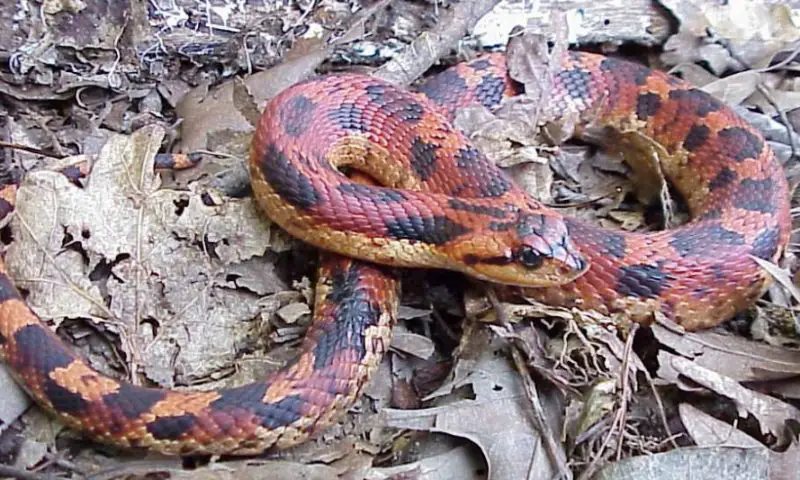
The Eastern Hognose Snake (Heterodon platirhinos), also known as the eastern hog-nosed snake or spreading adder, displays various colors, including orange-red and black morphs. With its thick body reaching up to 46 inches, it’s common in the Eastern US.
This species employs unique defensive tactics, such as inflating its neck like a cobra or playing dead, complete with sticking out its tongue. Feeding on salamanders, toads, small birds, and mammals, it’s remarkably resilient to toxins, even swallowing live toads whole.
Eastern Worm Snake
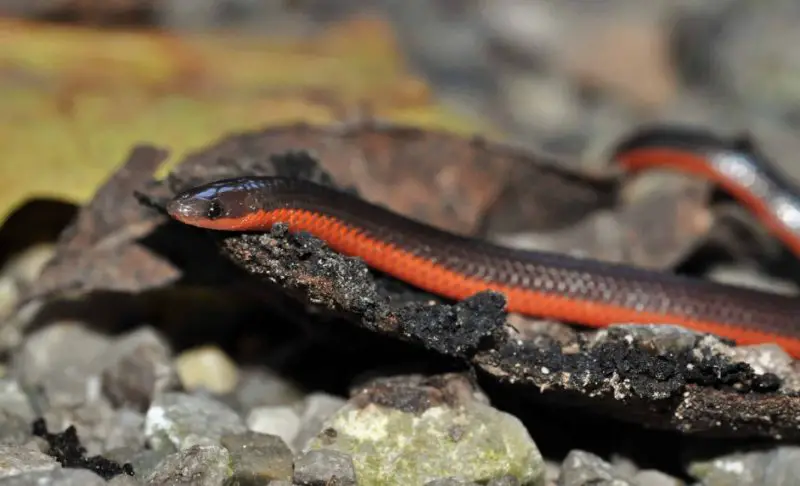
Eastern Worm Snakes (Carphophis amoenus) exhibit diverse morphs, including a black and red variation with a red underbelly. Their burrowing lifestyle makes them elusive, often spending their lives underground or hiding in rotting logs for humidity. Typically found in forested areas with thick canopies, they’re most active in the afternoon and early at night.
Predation by species like opossums threatens these slender snakes. Despite their small size and limited mobility, they’re common in woodlands, particularly in regions like Northern Virginia.
Pygmy Rattlesnake

Pygmy Rattlesnakes (Sistrurus miliarius) exhibit various morphs, including a red and black variant, though less common than gray or lavender ones. Venomous like all morphs, they favor creek and marsh habitats but can also be found in drier areas. Preferring thick vegetation and mixed forests, they prey on lizards, frogs, insects, and arachnids.
Due to their elusive nature, spotting these snakes is challenging, as they spend much of their time hidden, using leaves, bushes, or rocks as ambush sites. They’re occasionally seen crossing roads near their habitat at night.
Central American Indigo Snake
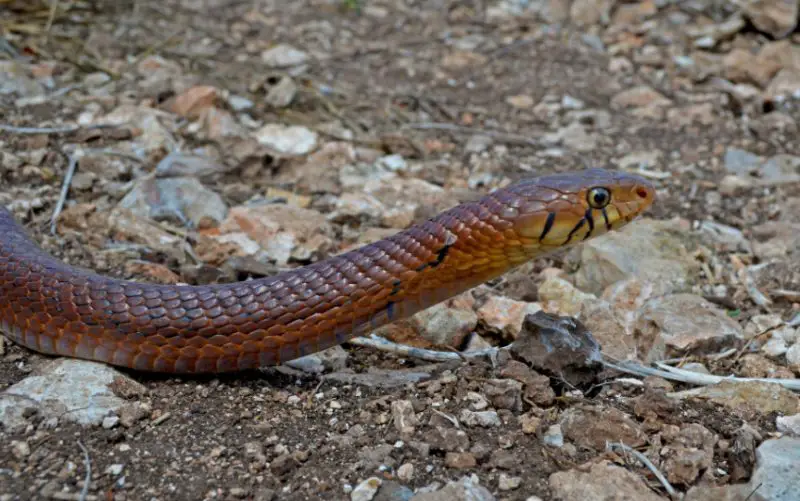
The Central American Indigo Snake (Drymarchon melanurus) features a striking black and red morph, distinguishing it as one of the largest snakes with this coloration, growing up to 6 feet. Glossy black scales dominate its dorsal side, while the underside is predominantly red.
Found in the Southern US and Central America, it’s also known for its olive green morph, though the black and red variation is more common in regions like Mexico, Honduras, Peru, Colombia, and Ecuador.
Rainbow Snake
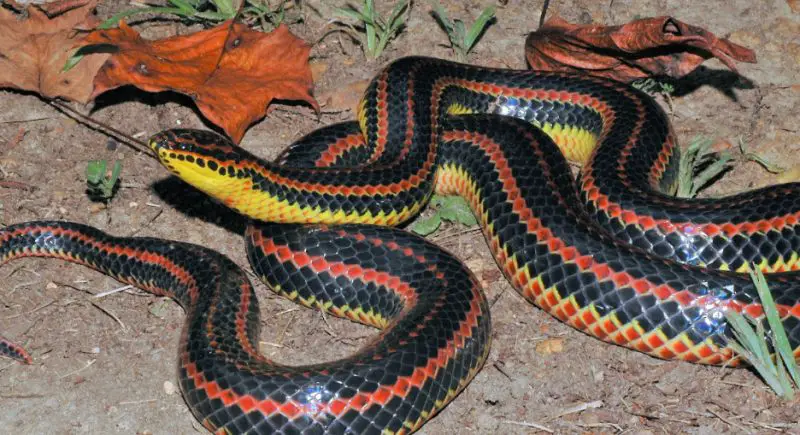
Rainbow Snakes (Farancia erytrogramma) are striking inhabitants of the Southern US, often residing in cypress swamps and other aquatic habitats. Their distinctive black and red coloration, with a predominantly red underbelly adorned with black and yellow lines, makes them easily recognizable.
Despite their abundance, they remain elusive due to their secretive nature, preferring dense vegetation in wetlands where human presence is minimal. Occasionally observed feeding on eels, these snakes lay over 20 eggs per season, with some females laying up to 50 during particularly successful mating periods.
Tamaulipan Milksnake
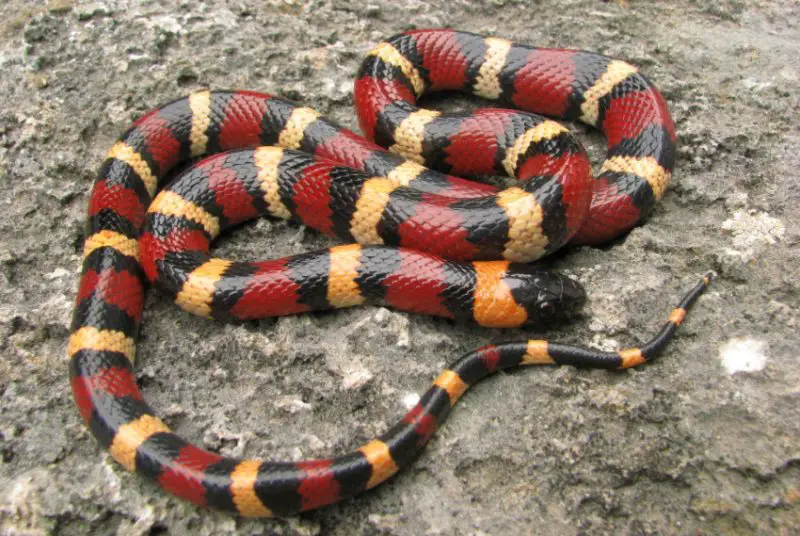
The Tamaulipan Milksnake (Lampropeltis annulata), also known as the Mexican milk snake, is recognized by its red body with alternating black and yellow bands. While predominantly red, the intensity of coloration varies by region, ranging from vivid red to red-brown. Despite their secretive nature and tendency to flee from humans, they are docile when handled, making them popular exotic pets.
Milksnakes only become aggressive when threatened, often vibrating their tails as a warning before biting. Non-venomous, they have a diverse diet, including insects, spiders, rodents, reptiles, birds, and eggs. Females lay up to 10 eggs at a time, contributing to their reproductive success.
Sharp-tailed Snake
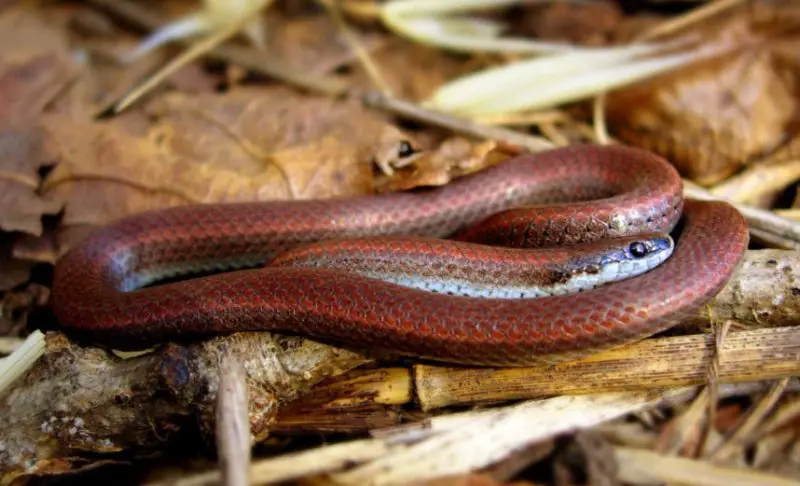
The Sharp-tailed Snake (Contia tenuis), also known as the brown snake or Oregon worm snake, inhabits the Western US, primarily Oregon and British Columbia. Sporting black and red coloring, with some regions showcasing a dark gray morph, they’re often mistaken for earthworms due to their slender bodies and small size.
These burrowing snakes, typically found during construction or digging, feed on slugs using their pointed tails. They become defensive when unearthed, curling into a motionless ball. Lay 4 to 16 eggs underground, which hatch after a few weeks, producing young snakes resembling adults in coloration but measuring only around 4 inches.
Ring-necked Snake
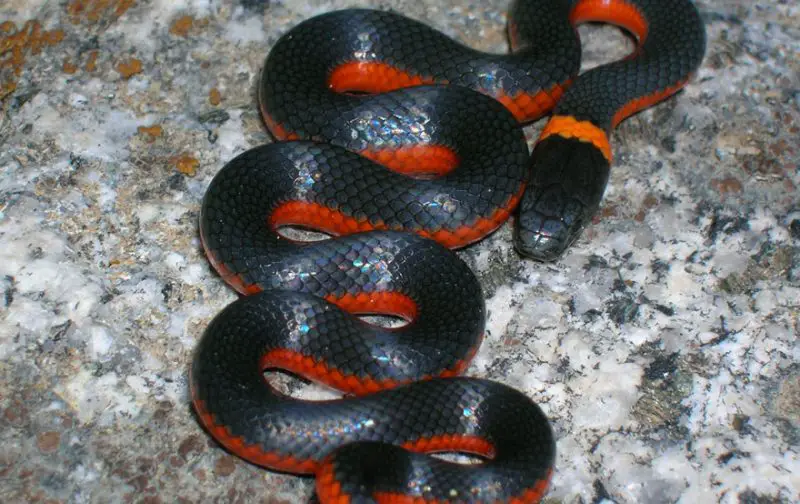
The Ring-necked snake (Diadophis punctatus), also known as the ringneck snake, is a small species, typically growing 10 to 15 inches. Recognizable by its black dorsal and red or orange ventral coloring, this bicolored snake is common in the US, especially in Southern states.
Ring-necked snakes inhabit diverse environments, including woodlands, where they hunt moisture-dependent prey like salamanders. Although they have venomous saliva, it poses no threat to humans but helps subdue their prey.
Red-bellied Snake
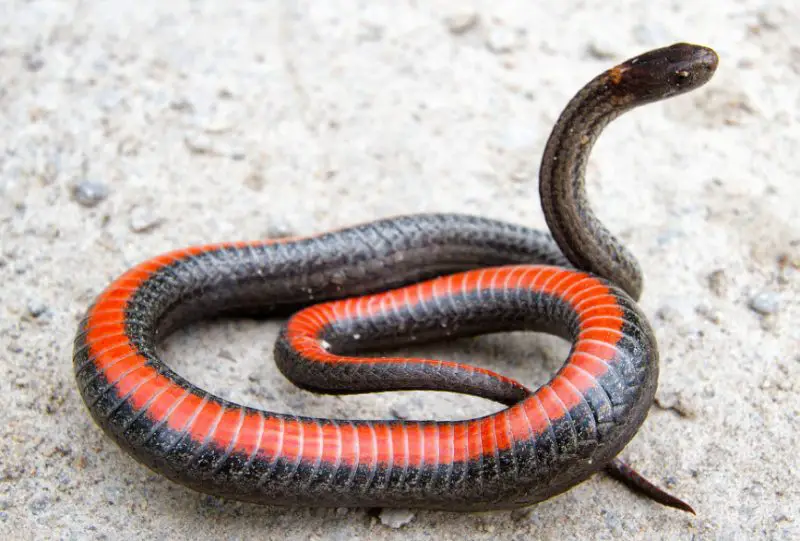
The Red-bellied snake (Storeria occipitomaculata), also known as the redbelly snake, features a dark gray dorsal and a red underbelly. These small snakes, ranging in size from 4 to 10 inches as adults, inhabit woodlands and wetland edges.
They primarily feed on slugs, which are abundant in these environments. Females give birth to live young each summer, with up to 23 offspring in ideal conditions, though typically around 9 in the wild.
Texas Coralsnake

The Texas coralsnake (Micrurus tener) is distinguished by its black, red, and yellow rings. As one of the most venomous snakes in the Southern US, it poses significant danger to both prey and humans. Often mimicked by other species, this snake primarily preys on smaller snakes.
Its potent venom can cause neuromuscular dysfunction, necessitating immediate medical attention for all bites. Although fatalities are rare, some bites are dry, with no venom injected. Antivenin production for its venom has ceased.
Ground Snake
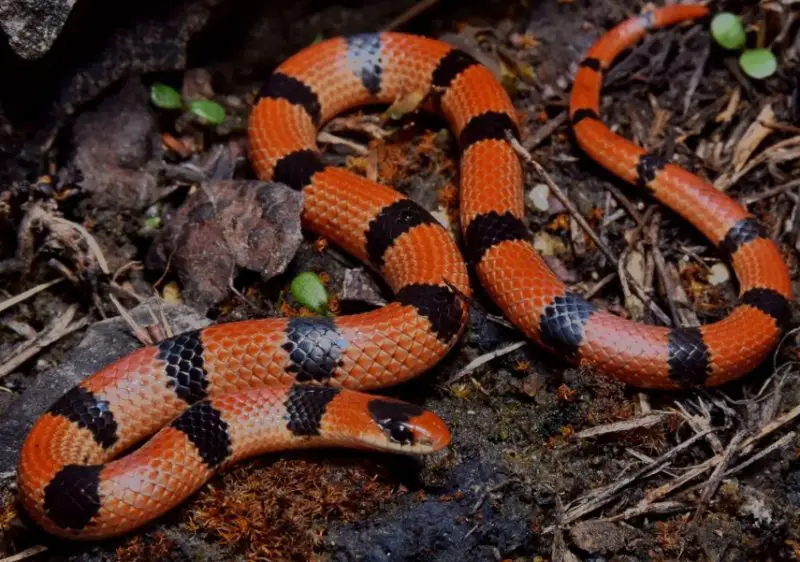
The Ground snake (Sonora semiannulata), also known as the western ground snake or variable ground snake, exhibits diverse color variations, including black and red, orange and black, brown and black, or red and black. Growing up to 18 inches, these snakes are commonly found in rocky areas with loose soil, making them elusive.
Nocturnal by nature, Ground snakes are often seen at night while hunting for food. They may enter suburban areas and drainage systems in search of rodents, roaches, and moisture.
Mudsnake
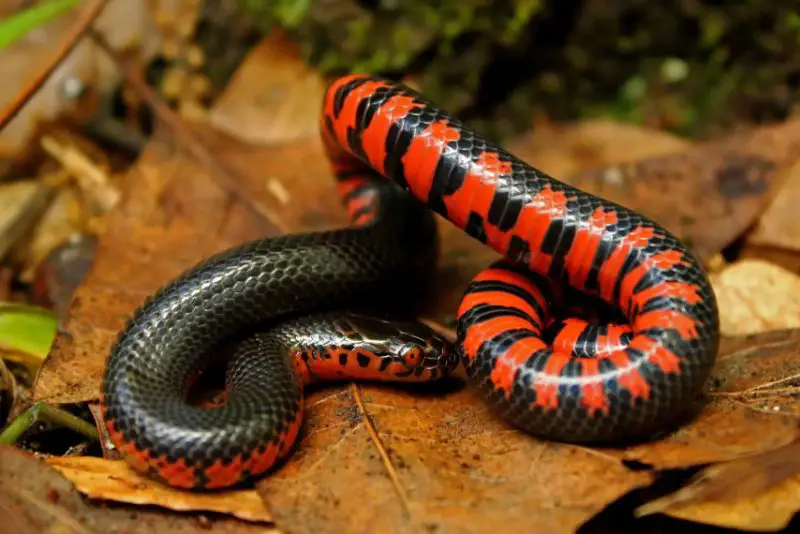
The Mudsnake (Farancia abacura) is a common yet secretive species found in Southern US wetlands. As they mature, their coloration changes from yellow and black or red, yellow, and black as juveniles to red and black as adults. Mudsnakes have a varied diet, including aquatic vertebrates and invertebrates, with giant salamanders being a favorite.
Non-venomous, they are protected in some states like Georgia due to habitat loss. Rarely seen, they are mostly nocturnal and move between wetlands at night.
Eastern Coralsnake
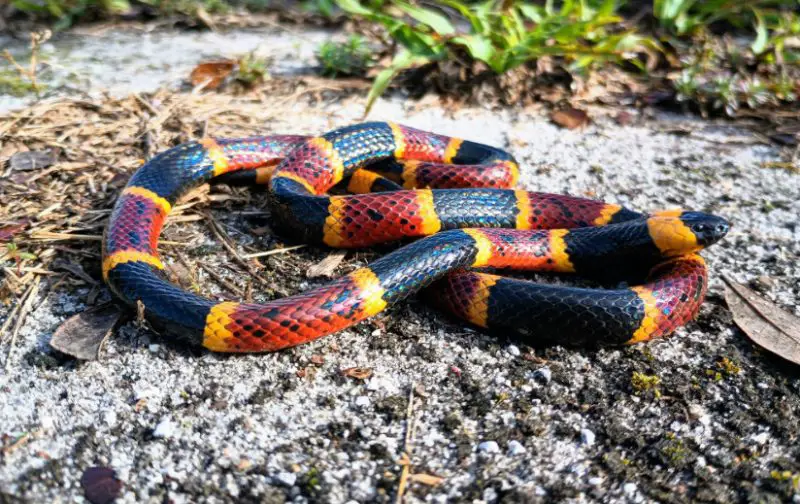
The Eastern Coralsnake (Micrurus fulvius), also known as the common coral snake or Florida coral snake, resembles the Texas Coralsnake with its red, black, and yellow rings. These slender snakes can grow up to 4 feet and inhabit Southern US woodlands and sandy terrains, like the plains of Florida.
Highly venomous, bites are rare but can cause severe reactions such as double vision and speech difficulties. Eastern Coralsnakes primarily prey on lizards and smaller snakes, and they do not typically seek to bite humans.






